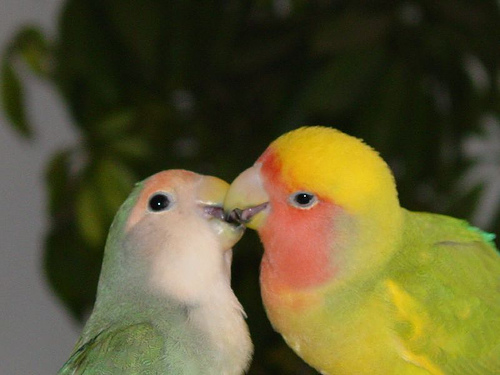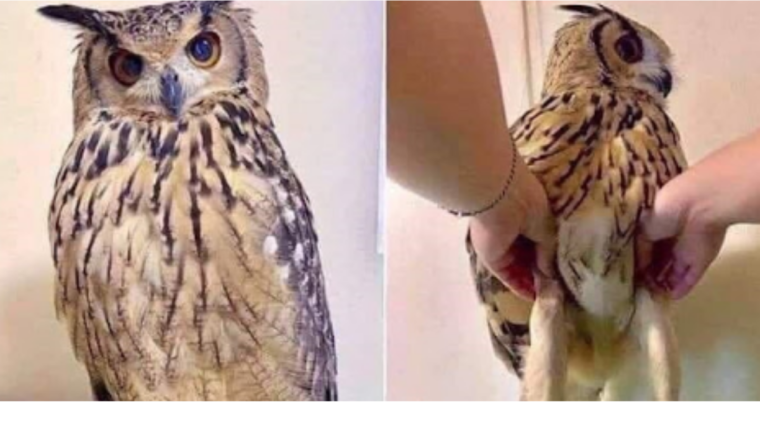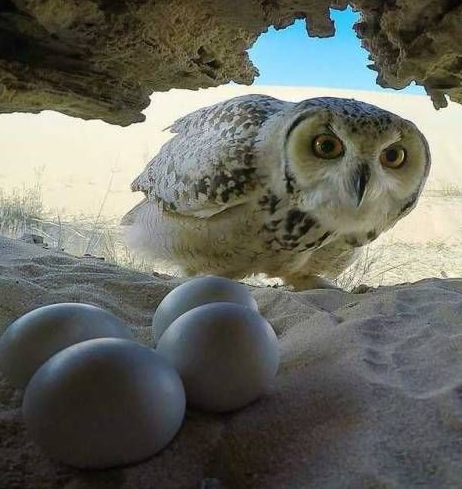
Introduction:
Owls, the enigmatic nocturnal predators that grace our night skies, have fascinated humans for centuries. Beyond their mesmerizing appearance and haunting calls, owls also have a remarkable reproductive cycle. Central to this cycle are their eggs – delicate yet vital vessels of future generations. In this article, we explore the fascinating world of owl eggs, exploring their sizes, colors, nesting habits, and the astonishing diversity of breeding strategies across owl species.
We will also learn, What is their Sizes, Colors, and Breeding Marvels and much more stay tuned to find out more.
OWL Eggs-Size and Shape:
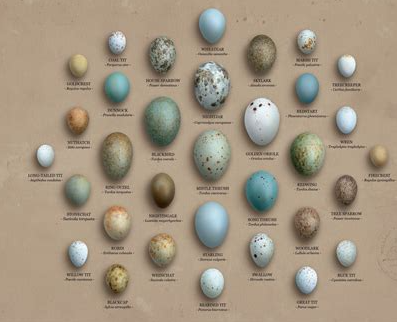
Owls egg identification is it easy or hard, lets understand in detail.
Wondering what do owl eggs look like?
Owl eggs exhibit a remarkable diversity in size and shape, akin to nature’s intricate artwork. Measuring between 1.2 to 2.5 inches in length, these eggs are proportionate to the owl species’ size. Interestingly, larger owl species often lay larger eggs, reflecting the intricate interplay between biology and adaptation. The egg’s unique oval shape, tapering at one end, is both a marvel of evolution and an adaptation for efficient nesting.
OWL Egg-Coloration and Camouflage:
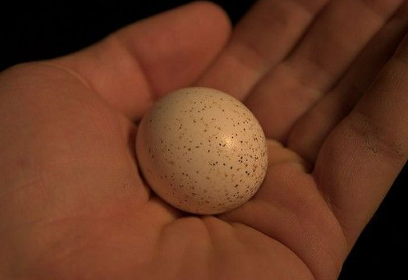
The coloration of owl eggs unveils a captivating array of hues, each a testament to the species’ distinct characteristics. While the majority of owl eggs maintain a pristine white or off-white appearance, some species deviate from this norm. The Little Owl and Long-eared Owl, for instance, may lay eggs with subtle grayish or brownish undertones. This chromatic diversity is not merely ornamental; it serves a vital purpose. The white or off-white coloration aids in camouflage, reducing visibility to potential predators. Additionally, the slightly rough texture of the eggshell serves as a tactile advantage for incubating parent owls, ensuring a secure grip and minimizing the risk of accidents.
Breeding Seasons and Frequency:
Owls’ breeding behavior unveils a symphony of rhythms, choreographed by environmental cues and species-specific adaptations. The timing of egg laying, a crucial aspect of the breeding cycle, varies across species and geographical locations. While some owls seize the opportunity to breed from spring to early summer, others embrace different timelines dictated by food availability and climatic conditions. The frequency of owl egg-laying further enriches this narrative. While some species breed annually, others opt for biennial or even triennial reproductive cycles, reflecting the intricate balance of nature’s grand design.
Nesting and Laying:
In the intricate tapestry of nature, owl eggs play a crucial role in the continuation of these avian wonders. The egg-laying process begins with the female owl constructing a nest, a safe haven for the forthcoming clutch. The most common spots for nesting are high places like trees, cliffs, and burrows. The clutch size, which refers to the number of eggs laid by the female owl, varies greatly among owl species. From a solitary egg to a dozen, each clutch reflects the species’ adaptation to its environment and survival strategies.
Owl Egg-Nesting Locations:
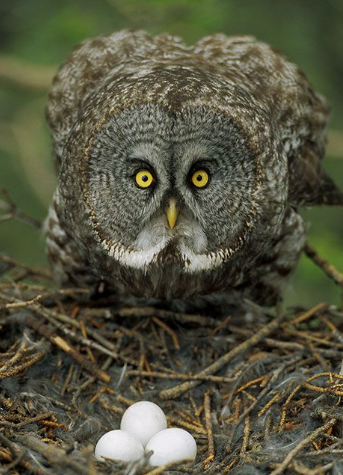
Owls are adept architects, displaying a remarkable spectrum of nesting preferences. From tree cavities and cliffs to underground burrows and man-made structures, each nesting site tells a unique story.
The choice of nesting location is influenced by factors such as habitat availability, protection from predators, and access to resources. Some owl species, like the Great Horned Owl, demonstrate an affinity for tree nests. In contrast, the Burrowing Owl masterfully crafts underground burrows, showcasing the remarkable adaptability of these feathered marvels.
Owl Species and Egg Characteristics:
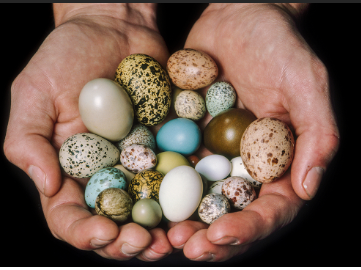
The rich tapestry of owl species reveals an awe-inspiring array of egg characteristics, each a tribute to the species’ evolutionary journey. The iconic Great Horned Owl, a symbol of wisdom and mystery, lays 2-3 eggs in stick nests adorned with soft materials. In the vast expanse of the Arctic tundra, the Snowy Owl lays its eggs in shallow depressions on the ground, its clutch adorned with the promise of life. Barred Owls, denizens of woodlands, choose tree cavities for their nesting, with clutch sizes of 2-4 eggs. The Barn Owl, with its distinctive heart-shaped face, weaves pellet-filled nests and lays 4-7 eggs. Meanwhile, the Burrowing Owl and Short-eared Owl embrace underground burrows, a testament to nature’s ingenuity.
Legal and Health Considerations:
As stewards of the natural world, it is imperative to approach owl eggs with respect and understanding. Disturbing or consuming owls eggs is not only ethically questionable but also illegal in many regions. These eggs are protected by wildlife conservation laws, safeguarding the delicate balance of ecosystems. Moreover, owl eggs can harbor potential health risks, containing pathogenic bacteria and contaminants that pose a threat to human well-being. If you are interested to know more in detail about OWL
Conclusion:
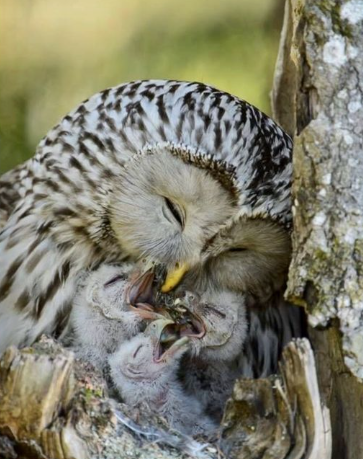
Owl egg, delicate and emblematic of the cycle of life, offer a window into the marvels of avian reproduction. Their sizes, colors, nesting habits, and breeding strategies underscore the intricate relationships woven into the fabric of the natural world. As we reflect on the wondrous diversity of owl species and their eggs, let us celebrate and protect these magnificent creatures and the ecosystems they call home. By doing so, we acknowledge the unwavering legacy of these avian marvels and ensure that future generations will continue to be captivated by the captivating realm of owl eggs.


